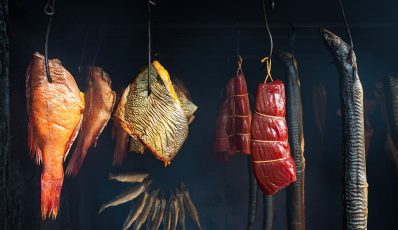Food carving is the art of carving fruit or vegetables, a technique that originates from Asia. Using special carving knives, virtually anyone can start creating unique decorative elements at their the table and impress their guests. This type of decoration is also popular in restaurants, at banquets and events, during wedding ceremonies, etc.

Food carving is the art of carving fruit or vegetables, a technique that originates from Asia. Using special carving knives, virtually anyone can start creating unique decorative elements at their the table and impress their guests. This type of decoration is also popular in restaurants, at banquets and events, during wedding ceremonies, etc.
How to learn food carving
In the Far East, fruit and vegetable carving is a craft that is taught in schools. In Thailand, children learn to carve food as early as at age of 11. Amazing sculptures made of fruit and vegetables at events and rituals should therefore come as no surprise. This custom is also celebrated in Ireland and is associated with the Festival of Samhain.
Carving arrived in Europe relatively late. The first followers of this art gained their knowledge from Thai masters and then spread it among those interested in the technique back home. The first European Carving Championship took place in Leipzig, Germany, in 2011.
But you don’t have to travel to the Far East to learn the art of carving. Fruit and vegetable carving workshops have been organised for some time now across Europe, including in the UK, so learning the art is now accessible for anyone. The results depend on your commitment, talent and creativity. Carving has also developed into a popular scope of interest for many chefs and therefore in catering in general.
According to those already familiar with the art, learning this craft is not as difficult as it may seem. One day is usually enough to acquire the basic knowledge and skills of carving. Step by step you can work towards perfection. You will need special carving knives, designated for using to decorate fruits and vegetables.
Carving knives
When starting to explore a new craft, you will usually need the appropriate equipment. The same goes for carving. For fruit and vegetable carving you will need special knives, usually sold in sets. They have thin blades, allowing you to easily achieve extremely clear shapes and patterns.
The blades need to be very sharp in order to make precise cuts without risking damage to the carved objects. Fruit and vegetable carving knives are usually made of stainless steel, which does not oxidise and therefore does not react with food. Additionally it does not leave any marks on the carved objects, other than the carved shapes.
The basic carving knife is the Thai knife. Its blade and round handle ensure great manoeuvrability and ease-of-use, letting you precisely cut all kinds of shapes and patterns. You will also need a knife with a pointed and thin blade, in order to draw rough pattern shapes on the skin of a fruit or vegetable.
A carving set will usually also come with knives used as chisels. Their blades are U or V-shaped, letting you make unique carvings. A sickle-shaped knife for cutting out inscriptions, a double-sided spoon for scooping balls and scissors for cutting flat elements will also be of great use.
Such a set makes carving much more effective.
-
Salad cutter 149.00 GBP
-
Tomato cutter – 5.5 mm slices
109.00 GBP99.00 GBP -
Multi Vegetable Slicer – manual
159.00 GBP149.00 GBP -
Vegetable Slicer – 230 mm 139.00 GBP
Fruit carving
The best fruits for carving are exotic fruits, such as pineapples or watermelons. Melons and pumpkins are also good, and their size makes them excellent material for fruit carving beginners. Carving fruits is easier when they are not yet fully ripe or too juicy. Fruit sculptures are often decorated with vegetables such as: carrots, courgettes, radishes, celery, beetroots or kohlrabi.
Vegetable carving
Carving vegetables is somewhat more challenging, because they are much harder than fruit. Carving specific patterns and shapes requires not only more strength, but also experience, making it more time consuming. Chili peppers, herbs, lettuces and fruit can be used as decorations.
Summary
The art of fruit and vegetable carving has a long history. Originating in Asia, it has become not only a form of art, but also an additional attraction at various types of events. Large restaurants, as well as other catering companies, frequently employ the art of carving, offering their guests unforgettable table decorations in the form of spectacularly carved sculptures.
Learning the art is not as difficult as it looks. You will need a lot of willingness, enthusiasm, creativity, and of course the right tools.






Share